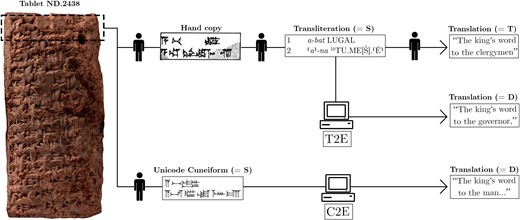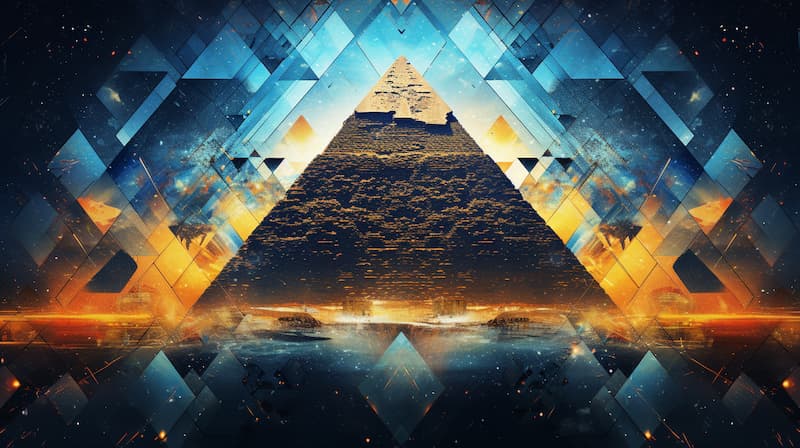The study and understanding of dead languages, like the Egyptian hieroglyphics, Mayan glyphs, or the earliest form of Greek (Linear B), has long been a laborious and time-consuming task for scholars. Now, a revolutionary technology stands to redefine this field of study: artificial intelligence (AI). This groundbreaking tool, capable of decoding complex ancient languages like Akkadian cuneiform within mere seconds, is set to unlock the potential of our collective human past.
AI Comes to the Rescue of Lost Languages
Cracking the code of long-extinct languages has always been a herculean task, often compared to navigating a vast sea without a North Star. The Akkadian language is an apt illustration of this daunting endeavor. Originating from an empire based in present-day Iraq during the 24th to 22nd centuries BCE, Akkadian existed in both written and spoken forms, employing an intricate writing system called cuneiform. As an essential part of this ancient civilization's cultural legacy, countless untranslated Akkadian texts lie in museums and universities worldwide.
Why is it so crucial to decode these languages? The answer is simple: every untranslated text is a lost piece of the human cultural puzzle. By translating them, we unlock more detailed knowledge about our ancestors and the societies they created. And while traditional translation is a complex and nuanced art form, AI provides a promising solution for the overwhelming number of existing cuneiform texts.
Machine Learning and the Art of Translation
One might ask, why has it taken so long for technology to be applied to the problem of deciphering ancient texts? In the past, translation programs lacked the flexibility to handle the subtleties of language, including idioms, cultural nuances, and exceptions to formal grammar rules. But recent advancements in AI have brought about a new era of machine learning and deep learning, giving machines the ability to understand these "fuzzier" aspects of language.
The development of an AI model capable of translating ancient Akkadian is a testament to this technological leap. An interdisciplinary group of computer science and history researchers trained this AI model using existing cuneiform translations, employing the same technology that powers Google Translate. The result? An AI tool that can perform two types of translation—translating cuneiform to English and transliterating cuneiform. Its performance, as gauged by the Best Bilingual Evaluation Understudy 4 (BLEU4), exceeds the team's expectations, showcasing high-quality translations.
The Opportunities and Challenges of AI Translation
As revolutionary as this technology is, it is not without its limitations. The cuneiform AI translator, while able to produce high-quality translations, still makes mistakes and exhibits certain "hallucinations" - a common issue with AI systems. Moreover, AI cannot yet fully understand the rich cultural and historical contexts embedded within the language, which is a vital aspect of any translation effort.
Yet, despite these shortcomings, the AI translation tool provides a significantly quicker and less labour-intensive alternative to traditional methods. It offers a promising stepping stone towards more efficient and comprehensive translations of Akkadian and potentially other dead languages in the future. The research team plans to continue refining the model, which will assist researchers by providing preliminary translations that can be reviewed and corrected by humans.
The Future of AI in Deciphering Dead Languages
While the AI tool's output must be taken with a grain of scepticism, it undeniably opens the door to a new age in the study of ancient civilizations. It raises the exciting possibility of rapidly gaining a much deeper and more nuanced understanding of our past. Its potential application to other dead languages suggests that this AI tool is just the beginning. A promising future scenario might include the model showing its sources for translations, aiding scholarly research and further credibility.
Undoubtedly, the advent of AI in the field of language translation is transformative, its potential far-reaching. As we continue to refine this technology, we are essentially extending our reach into the past, allowing us to touch, feel, and understand the worlds of our distant ancestors with greater clarity and depth than ever before. These dead languages, no longer undeciphered relics, can become living testaments to human history, aiding our understanding of where we come from and, possibly, where we are headed.
The AI revolution is not just about translating languages—it's about translating the human experience, one ancient text at a time. And in doing so, it continues the essential work of historians and linguists, making the vast seas of our collective past a little less daunting to navigate. With AI as our North Star, we are no longer lost in translation.
Reference








